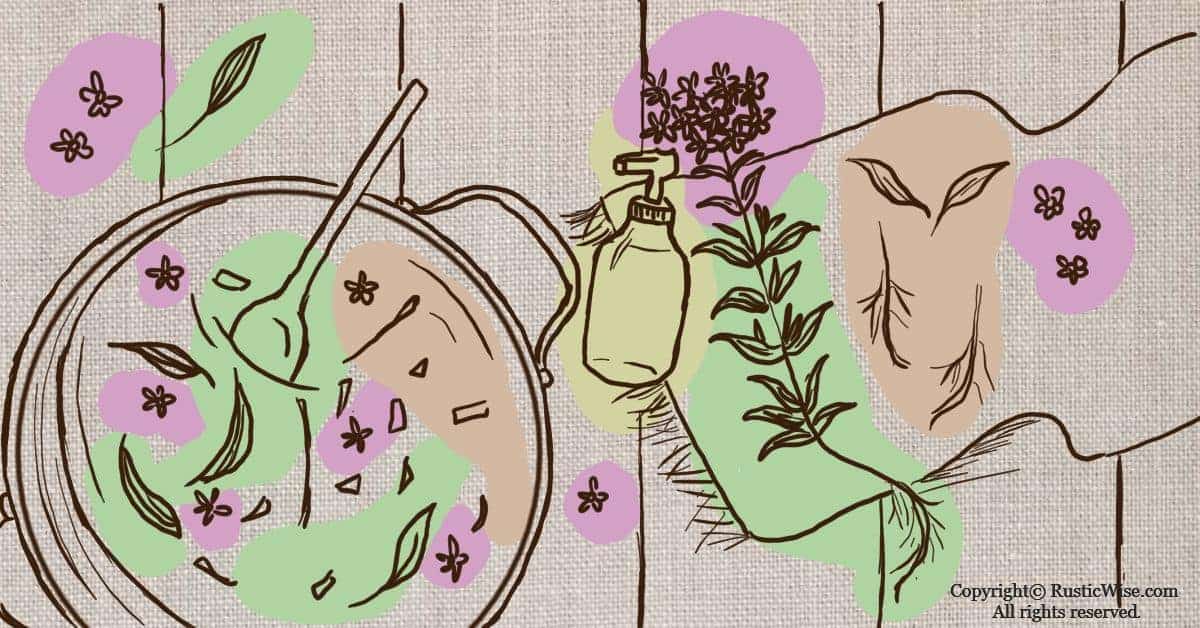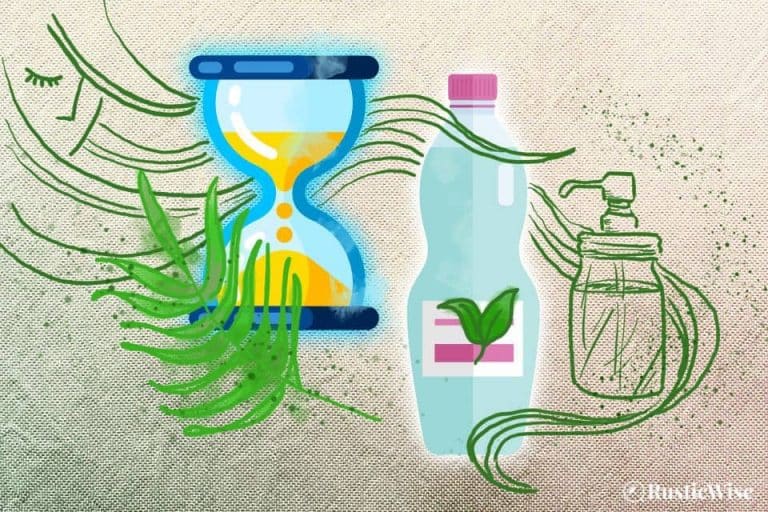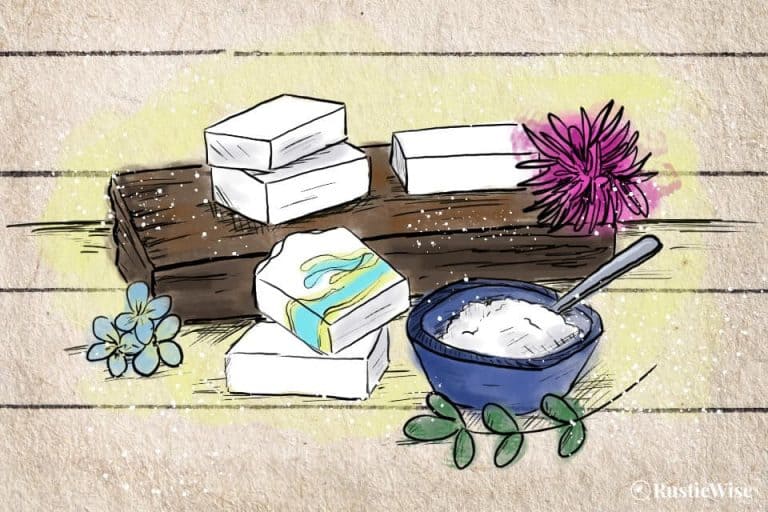How To Make Soap From Soapwort Plant and 6 Easy Ways To Use It
Soapwort (Saponaria officinalis) is a plant—some would say weed—that’s native to Europe and Asia, but now grows in most temperate areas. It has been used for centuries to make soap because it contains saponins, plant-based compounds that work as natural surfactants to create lather in soaps. If you’re wondering how to make soap from soapwort plant, it’s as simple as making a decoction. We’ll show you how to make this natural and mild soap using either fresh or dried soapwort.
If you’re tired of all the harsh chemicals found in traditional soaps, and don’t want to handle lye used to make hot or cold process soaps, then soapwort soap may just be what you need.
The process of how to make soap from soapwort plant is easy!
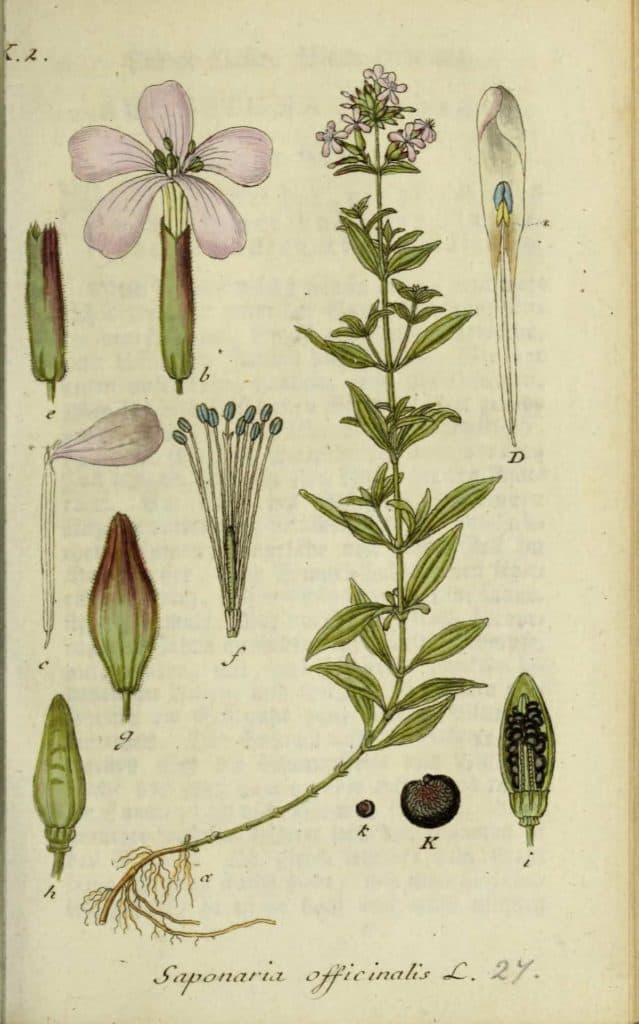
Credit: Biodiversity Heritage Library / Flickr
On soapwort and saponins
Soapwort’s scientific name is Saponaria officinalis; “Sap” meaning “soap” in Latin. In the naming convention of the plant world, “wort” simply means “a plant that is used for.” So, soapwort is aptly named, don’t you think?
Other common names for soapwort are soapweed, and Bouncing Bet.
Since medieval times, soapwort has been used to wash wool and other textiles. Europeans used soapwort to wash wool for clothing and bedding because it was gentle on the fibers. Today, people still use this botanical as an ingredient in natural liquid soap recipes.
As we mentioned above, soapwort is rich in naturally-occurring saponins which when in contact with water, produces a lovely lather.
Saponins are concentrated in the root of the plant, but the leaves, stems, and even flowers contain saponin too. Saponins are soluble in both water and fat (which helps to banish grease from dirty dishes or skin and hair).
While creating a natural soap is very beneficial to people, the high saponin-content in soapwort may harm fish and other wildlife as well as cattle, or household pets.
As soapwort can be quite invasive and grows readily in fields, meadows, and along waterways, it often poses toxicity problems for farmers and their grazing livestock.
Besides soapwort, there are several other plants that contain saponin including corn cockle, cow cockle, and broomweed. A few symptoms of soapwort poisoning in animals include:
- Diarrhea and upset stomach
- Lethargy
- Weight loss
- A change in appearance of the hair coat (more rough)
If you’re planning to plant soapwort in your garden, make sure to keep it well away from bodies of water. And watch for it to spread like wildfire—it’s quite invasive!
Safety note: Soapwort is not safe for consumption—please don’t ingest the plant or resulting liquid cleanser. It may cause vomiting and stomach pains.
Why use soapwort to make soap?
As a natural and mild alternative to traditional detergents, soapwort is perfect for cleaning delicate fabrics such as silk and lace, or woven fabric tapestries, rugs, or your wonderful macramé creations.
Plus, if you’re not a fan of handling lye which is needed to make hot or cold process soaps, you don’t need to worry about it with soapwort soap.
Don’t expect big bubbles however when making your DIY soapwort soap. While the plant contains saponins which creates a mildly soapy lather when in contact with water, it is just that—mild.
Does soapwort have a scent?
As a flowering herbaceous plant, soapwort attracts pollinators, and has a fragrant sweet smell, similar to sweet clover.
When to harvest soapwort
If you happen to have soapwort growing in your own garden, the best time to harvest is in the spring and summer when flowers are blooming. You’ll also readily find soapwort growing along roadsides, beside waterways such as streams, and in fields and meadows.
Soapwort has five-petaled flowers that range from white to pink. The flowers grow in clusters at the top of each thick stem.
The leaves, stems, and flowers are easy to collect. If you trim back a few leaves and stems on each plant, they may grow back and bloom again. The roots, however, are where the jackpot is in terms of saponins. You may need to use a small trowel to dig these up.
While you can make soapwort soap using fresh plants, it’s also easy to dry for use all year-round. The roots and leaves can be washed, chopped, and dried.
When foraging, always ensure you properly identify the plant first. Consult with local guidebooks for identification.
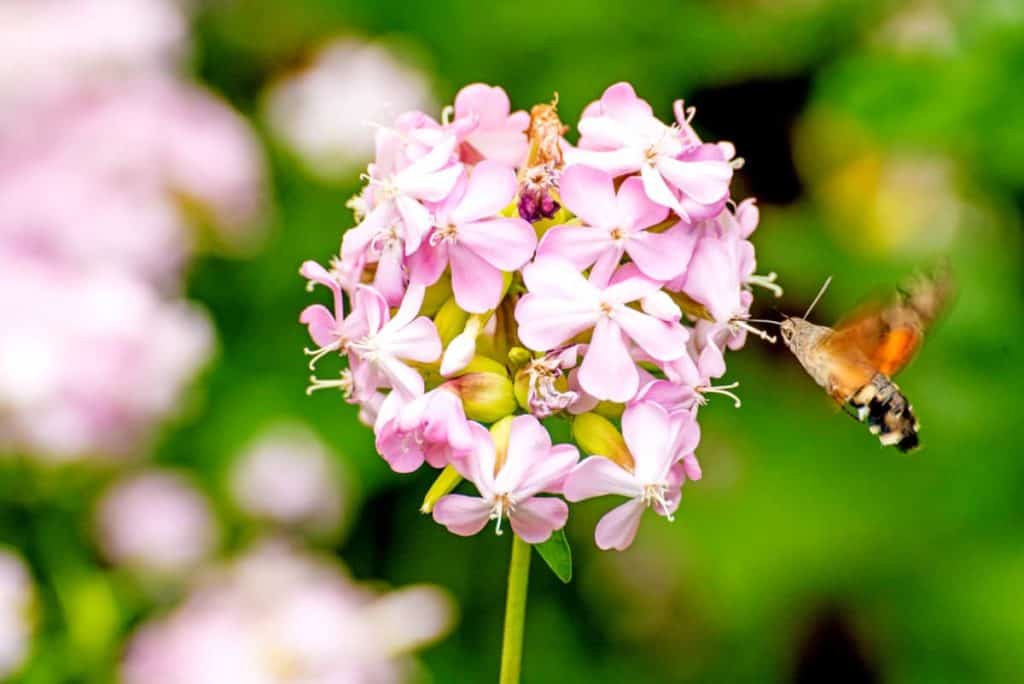
Credit: Yay Images
6 ways to use natural soap made from soapwort
- Use to wash delicate items such as silk undergarments.
- Wash woolen sweaters and socks.
- Wash wall tapestries and other fabric creations such as macramé.
- Use to freshen up and wash delicate rugs.
- Use as a gentle shampoo.
- Use as a mild skin cleanser. Soapwort has soothing properties which makes it an ideal mild cleanser and hand soap if you suffer from itchy, dry skin.
How to make soap from soapwort plant
Making a soapwort liquid soap solution is easier than you think. All you really need is soapwort (fresh or dried), distilled water, and a pot to boil it in.
We’ll show you how to make a more heavy-duty soapwort solution for cleaning textiles or fabrics, and a gentler version that’s perfect for use as a mild skin cleanser, liquid hand wash, or even shampoo!
The recipes call for distilled water. If you’ve made hot or cold process soap before, you know that distilled water is preferred as it’s free of hard minerals and deposits such as calcium which may interfere with the final product.
If you don’t have distilled water, filtered water should be fine too.
Tip: As a general rule when working with soapwort, you would reduce the amount used by half if you’re using dried soapwort. For example, you can use 1 cup of fresh soapwort plant, but if you’re using dried soapwort, use only 1/2 cup.
Adding essential oils or fresh petals
If you’d like to add more fragrance to your homemade soapwort cleaning liquid, you can add a few flower petals to the pot when making the decoction, or add a few drops of essential oils after the solution has cooled and strained.
A few good options include:
- Calendula
- Chamomile
- Lavender
- Lemon verbena
- Mint
- Rose
- Rosemary
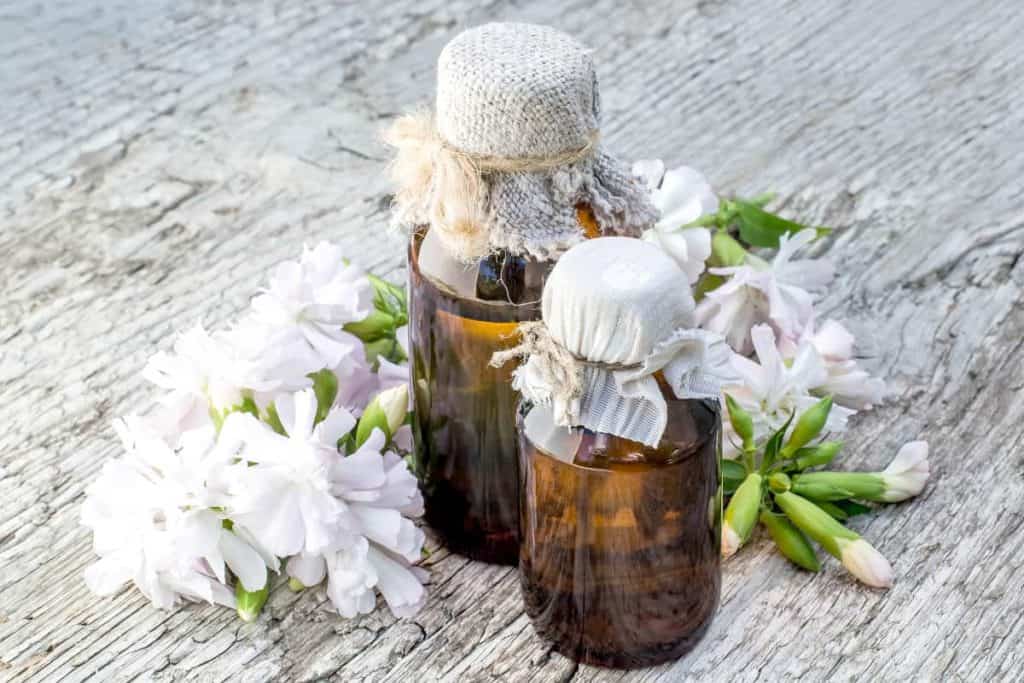
How to make a soapwort cleaning solution for fabrics
Make your own gentle liquid soap by collecting fresh leaves, stems, and roots of the soapwort plant. Or, you can use dried soapwort roots.
You’ll need:
- Large stockpot or saucepan
- Soapwort plant parts: fresh (1 cup); OR, dried (1/2 cup)
- 2 cups distilled water
- Cheesecloth or sieve for straining
- Colander, cutting board, and knife (if preparing fresh soapwort)
- Prepare the plant. Wash soapwort stems, leaves, and root. Gently bruise/mash the roots and cut stems into large pieces.
- Make the decoction. Place prepared plant parts into a large pot and cover with distilled water. Bring to a boil and reduce heat to medium. Continue boiling for up 15–20 minutes.
- Allow to cool.
- Optional: add a few drops of essential oil.
- Strain the liquid with a sieve or cheesecloth. You can pour into a spray bottle if you like.
Clean your fabrics. Either wet vacuum (if cleaning a rug) or allow the textile to air dry.
As soapwort soap has no preservatives, it doesn’t have a long shelf life. Store in the fridge for up to 10 days.
Tip: Always test out a small, inconspicuous area of the fabric, just in case.
How to make a soapwort skin cleanser/shampoo
Soapwort has natural cleansing and soothing properties, perfect for those suffering from dry, itchy skin.
The following recipe triples as an all-over skin cleanser or hand soap—you can also use it as a shampoo too. If using as a shampoo, keep out of eyes as it’s a known irritant.
The recipe is the same as the heavy-duty cleaner above, just with less soapwort for cleansing the skin or hair.
You’ll need:
- Large stockpot or saucepan
- Soapwort plant parts: fresh (3 tablespoons); OR, dried (1-1/2 tablespoons)
- 2 cups distilled water
- Cheesecloth or sieve for straining
- Colander, cutting board, and knife (if preparing fresh soapwort)
- Prepare the plant. Wash soapwort stems, leaves, and root. Gently bruise/mash the roots and cut stems into large pieces.
- Make the decoction. Place prepared plant parts into a large pot and cover with distilled water. Bring to a boil and reduce heat to medium. Continue boiling for up 15–20 minutes.
- Allow to cool.
- Optional: add a few drops of essential oil.
- Strain the liquid with a sieve or cheesecloth. You can pour into a soap dispenser, or bottle if you like.
Just as with the heavy-duty soapwort cleaning solution, you’ll also need to store your soapwort soap in the fridge for up to 10 days.

References
- Cornell University (College of Agriculture and Life Sciences), Saponins, https://poisonousplants.ansci.cornell.edu/toxicagents/saponin.html. Accessed July 2021.
- Plants For a Future, Saponaria officinalis – L., https://pfaf.org/user/plant.aspx?LatinName=Saponaria+officinalis. Accessed July 2021.
- Herda, DJ (2020). Your Indoor Herb Garden: Growing and Harvesting Herbs at Home. New Society Publishers. p. 78. ISBN 9780865719330.

Author: Theresa Tesolin
Theresa is co-founder of RusticWise. She helps people unleash their inner DIY spirit by encouraging them to get dirty and make or grow something from scratch.

